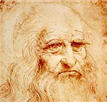Principle
- Third fire decoration has grown enormously over the past
few years, developing from an artistic and craft activity to a
real industrial operation.
Although the batches produced are much smaller than those of conventional
industrial tile production, the quantities of tiles decorated
in this way are nonetheless high enough to justify the use of
plant purposely built with state-of-the-art production lines.
The principle is to apply decorations into glazed tiles on which
an initial layer of glaze has already been fired.
The term "third-fire" derives from the fact that the
technique was first used when double firing was the only production
process.
In order to decorate a product with a fired layer of glaze (after
the product had already been fired twice), it had to be fired
a third time to fix the decoration.
The term is now used to describe decoration of a product that
has already completed the normal production process.
Printing on an impermeable and nonabsorbent, vitreous surface
is more complicated than printing on a porous surface such as
unfired glaze. Nonetheless, this procedure has some positive aspects
that make it useful for application on ceramic tiles.
Decoration can be performed using any of the methods we have described,
provided that the characteristics of the inks are modified to
take account of the fact that the tile is unable to absorb the
liquid part of the ink.
For third-fire decoration, the most widely used technique is still
flat screen-printing, both for application of screen printing
inks and for dry applications (e.g. powders, frits). Sometimes
the decorations are performed by hand (freehand, using stencils,
etc.)
Printing
Characteristics - The aim of third firing is to produce high-value
tiles, which can be used in small quantities to enhance the visual
appeal of the floor or wall tile installation.
It is most important that the decorated tiles coordinate successfully
with the field tiles. Since it is difficult to guarantee the same
colour tones in tiles from different production and firing cycles,
decorating selected fired products is an effective way of ensuring
that the background colour is identical.
The fired tiles are also dimensionally stable, which eliminates
a further cause of variability in the finished product.
This procedure is characterized by small batch sizes. The plants
are designed and sized for exceedingly high flexibility and tile
type can be changed several times a day.
Often it is not just the colour and/or design that is changed
but also the tile size or the printing procedure.
Products often undergo screen-printing, partial manual decoration,
and pointed application.
Given that the purpose of this process is to increase the value
of standard products, in most cases, a large number of applications
(six or more) are used.
The high value of the product makes it necessary to do everything
to achieve the highest possible quality, while output is of only
secondary importance.
Due to the plants flexibility and the lesser importance of quantity,
in the plant management economics, tile manufacturers tend to
use third fire decoration for articles that require a lower production
speed than is optimal for large-scale lines.
Mass-produced products are therefore manufactured using conventional
high-productivity methods while third fire decoration is reserved
for complementary articles.





